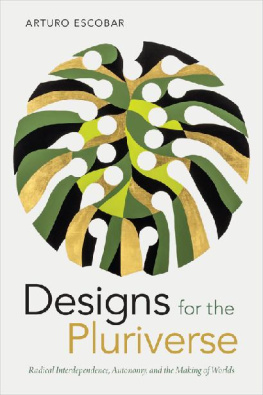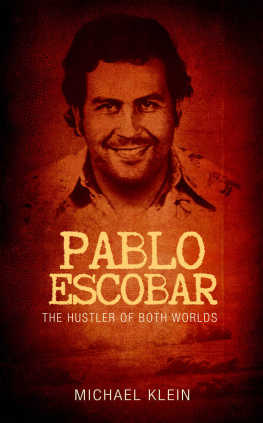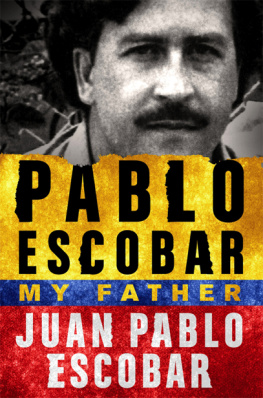New Ecologies for the Twenty-First Century
Series Editors: Arturo Escobar, University of North Carolina, Chapel Hill Dianne Rocheleau, Clark University
THIS SERIES ADDRESSES TWO TRENDS: critical conversations in academic fields about nature, sustainability, globalization, and culture, including constructive engagements between the natural, social, and human sciences; and intellectual and political conversations among social movements and other non-academic knowledge producers about alternative practices and socio-natural worlds. Its objective is to establish a synergy between these theoretical and political developments in both academic and non-academic arenas. This synergy is a sine qua non for new thinking about the real promise of emergent ecologies. The series includes works that envision more lasting and just ways of being-in-place and being-in-networks with a diversity of humans and other living and non-living beings.
NEW ECOLOGIES FOR THE TWENTY-FIRST CENTURY aims to promote a dialogue between those who are transforming the understanding of the relationship between nature and culture. The series revisits existing fields such as environmental history, historical ecology, environmental anthropology, ecological economics, and cultural and political ecology. It addresses emerging tendencies, such as the use of complexity theory to rethink a range of questions on the nature-culture axis. It also deals with epistemological and ontological concerns, building bridges between the various forms of knowing and ways of being embedded in the multiplicity of practices of social actors worldwide. This series hopes to foster convergences among differently located actors and to provide a forum for authors and readers to widen the fields of theoretical inquiry, professional practice, and social struggles that characterize the current environmental arena.
Designs for the Pluriverse
Radical Interdependence, Autonomy, and the Making of Worlds
Arturo Escobar
DUKE UNIVERSITY PRESS
Durham and London
2018
2017 Duke University Press
All rights reserved
Printed in the United States of America on acid-free paper
Designed by Matthew Tauch
Typeset in Arno Pro by Westchester Publishing Services
Cataloging-in-Publication Data is available from the Library of Congress.
ISBN 9780822370901 (hardcover : alk. paper)
ISBN 9780822371052 (pbk. : alk. paper)
ISBN 9780822371816 (ebook)
Cover art: Gabriel Orozco, Pianona 1 , 2013. Tempera and burnished gold leaf on linen canvas on wood. 40 40 4 cm. Gabriel Orozco/kurimanzutto, Mexico City. Image courtesy of the artist and kurimanzutto, Mexico City. Photo by Studio Michel Zab, 2013.
To Bob Marley , a prophet of our times
To the Zapatistas of Chiapas , for their pluriversal imagination
To the indigenous, Afrodescendant, and peasant communities of the Norte del Cauca region of Colombia , for their steadfast determination to defend the tejido de la vida (the relational weave of life) against rampant destruction by modern worlds.
Contents
The times they are a-changin, chanted Bob Dylan in a prophetic song back in 1964, at the dawn of the North American counterculture movement. That was well before intensive globalization with its increasingly conspicuous collateral damage, including climate change, widespread extractivism, extensive conflict and social dislocation, and the inexpressible devastation of the Earth. Today we would have to say, with climate justice activist Naomi Klein (2014), that this changes everything. For both Dylan and Klein, as for so many visionaries and activists worldwide and some farsighted designers, all of whom will be among the protagonists of this book, Kleins injunction is to be taken not only seriously but literally. What this means is that what is at stake is not just a given economic model (neoliberal capitalism), nor a set of cultural traits inimical to life on the planet (say, rampant individualism and consumerism), high-level policy reform (e.g., more comprehensive climate change protocols), geopolitical power struggles for re- and de-Westernization, or the ever-growing military-industrial complex. As Latin American indigenous, black, and peasant activists are wont to say, the contemporary crisis is a crisis of a particular modelo civilizatorio , or civilizational model, that of patriarchal Western capitalist modernity. This is a striking claim, but one that more and more social groups on the planet, in both the Global South and the Global North, are taking to heart in the defense of their places, territories, and cultures. As we shall see in the conclusion, the implication is none other than everything has to change. For those for whom the current conjuncture changes everything, what needs to change is an entire way of life and a whole style of world making. It goes deeper than capitalism.
This book is about this civilizational conjuncture, its implications for design theory and practice, and the practical potential of design to contribute to the profound cultural and ecological transitions seen as needed by a mounting cadre of intellectuals and activists if humanity is to face effectively the interrelated crises of climate, food, energy, poverty, and meaning. The book is based on the belief that this potential is real, as suggested by some trends within the design profession as a whole, particularly among a small but perhaps growing subgroup of designers who are actually already embarked on the project of design for transitions. Some of these designers claim that the crisis demands nothing less than a reinvention of the human. Bold claims indeed. The book finds its main epistemic and political inspiration and force, however, in the political struggles of indigenous, Afrodescendant, peasant, and marginalized urban groups in Latin America who mobilize with the goal of defending not only their resources and territories but their entire ways of being-in-the-world. Some of them do so in the name of their collective alternative Life Projects, a concept that is also finding a propitious home in transition design circles. The second wellspring of inspiration and ideas is the discourses and practices of the visionaries and activists who, in so many places and spheres of life, are engaged in bringing about the transitions. Thats at least how many of them see it. A main goal of the book is to ask whether design can actually contribute to enabling the communal forms of autonomy that underlie these transition visions and Life Projects. This is to say that one of the major goals of the book is to place cultural and political autonomy, as defined by the mobilized grassroots communities in Latin America, firmly within the scope of design, perhaps even at its center in the case of those wishing to work closely with communities in struggle.
To nourish designs potential for the transitions, however, requires a significant reorientation of design from the functionalist, rationalistic, and industrial traditions from which it emerged, and within which it still functions with ease, toward a type of rationality and set of practices attuned to the relational dimension of life. This is why the approach taken is ontological. Design is ontological in that all design-led objects, tools, and even services bring about particular ways of being, knowing, and doing. This ontological dimension of design will be discussed at length in the book. Major sources for the reorientation of the rationalistic tradition lie within the nondualist and relational forms of life effectively present among many of the peoples engaged in territorial struggles against extractive globalization. These struggles evince the strong communal foundations still present at the basis of these peoples social life. Insights for thinking about relationality are also found within certain postdualist trends in academic circles of late, often described as the ontological turn. Relationality is also present, in the last instance, in the Earth itself, in the endless and ceaselessly changing weave of life on which all life depends. At some point in the book, we will speak about the political activation of relationality to signal the emergence of these vital knowledges and forces.










